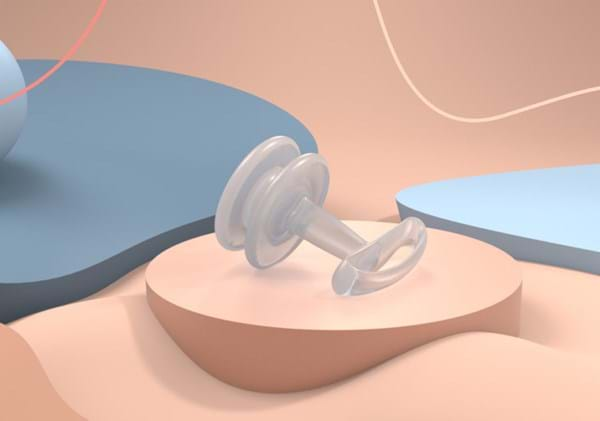Exercising with incontinence
Elaine Miller – part 3
If you start a new exercise class, the fitness professional will ask if anyone has any injuries. Most of us would happily raise our hand and share that we have a wrist or knee injury to the group – but, what if you have a vaginal prolapse or leak when you jump?
Women tend to avoid activities where they wet themselves, so they will give up Zumba, running or going on the trampoline with their kids. (1) That means missing out on the health benefits exercise gifts us – and that matters. Diseases of inactivity are now responsible for more premature deaths than smoking (2). The biggest killer of women in industrialised countries is coronary heart disease (3). We’ve got to keep moving, especially as we age.
Exercise is an excellent tool for managing stress and has positive effects on mental and emotional health. There are social benefits if you exercise with friends, join a class and make time for you. Memory and sleep are improved by exercise, and it can manage many symptoms of menopause (4) – you really don’t want to give it up because of a bit of bladder leaking!
However, it may be better for your long-term health to adapt your activities. Not forever, just for now, so that your pelvic floor function can let you exercise safely.
Leaking when you run, jump or lift is called stress incontinence (5). When you run, there are three times your body weight in impact landing in your heel with each step (6), if your muscles are too weak or uncoordinated, then you will leak. Some women find they can run for a bus without a problem, but 5k is beyond them.
Leaking with exercise doesn’t mean you have to stop, but you should adapt your activity so that you are not stressing your pelvic floor. This is especially important if you have risk factors for a vaginal prolapse as there is some evidence that impact exercise can cause or worsen them. (7)
There are new guidelines to help postnatal women return to running safely (8).
These simple tests will establish whether you have enough strength and stability to cope with the stresses running places on your pelvic floor and abdominal muscles. (infographic here: https://blogs.bmj.com/bjsm/2019/05/20/ready-steadygo-ensuring-postnatal-women-are-run-ready/)
Pessaries can be a helpful tool for women when they exercise (9). They are silicone or plastic devices which sit in the vagina. They can help support the neck of your bladder, or your prolapse and reduce your leaking. Pessaries come in a range of shapes and sizes, some can be bought over the counter, and others need to be prescribed. Some researchers and clinicians are considering whether using a pessary might be helpful for postnatal women and that if a woman is doing exercise that she’d wear a sports bra for, then she should possibly be using a pessary to support her pelvic floor too.
We want women to be able to enjoy movement, sports and fitness – to be able to look after their bodies and mental health through being active. Limiting your exercise to only running in the rain, when it’s dark and while wearing black leggings so that no one can see the stains of your leaking is not ideal for either training or enjoying yourself.
If you are finding that your bladder or bowel is interfering with what you want to do with your body then speak to your GP or pelvic health physio, don’t put up with it.
Apart from fun and fitness, with the way 2020 is going, you never know when you might need to be able to out-run a zombie.
References
(1)Brown, Wendy J, Yvette D Miller – “Too wet to exercise? Leaking Urine as a Barrier to Physical Activity in Women. J of sci and medicine in sport 4.4 (2001): 373-378
(2)Compr Physiol. 2012 Apr; 2(2): 1143–1211. Lack of exercise is a major cause of chronic diseases Frank W. Booth, Ph.D.,1 Christian K. Roberts, Ph.D.,2 and Matthew J. Laye, Ph.D.3 https://www.ncbi.nlm.nih.gov/pmc/articles/PMC4241367/
(3) Neth Heart J. 2010 Dec; 18(12): 598–602. doi: 10.1007/s12471-010-0841-y Gender differences in coronary heart disease A.H.E.M. Maas1 and Y.E.A. Appelman2 https://www.ncbi.nlm.nih.gov/pmc/articles/PMC3018605/
(4) BMC Public Health. 2013; 13: 813. 10.1186/1471-2458-13-813 Long-term health benefits of physical activity – a systematic review of longitudinal studies Miriam Reiner,#1 Christina Niermann,#2 Darko Jekauc,#2 and Alexander Woll#1 Head et al 2012, Khattab et al 2007
(5) https://www.ics.org/committees/standardisation/terminologydiscussions/sui
(6)https://pubmed.ncbi.nlm.nih.gov/2782094/?from_term=impact+strike+running+body+weight&from_pos=2 Acta Physiol Scand . 1989 Jun;136(2):217-27. doi: 10.1111/j.1748-1716.1989.tb08655.x. Ground Reaction Forces at Different Speeds of Human Walking and Running J Nilsson 1 , A Thorstensson
(7) Am J Obstet Gynecol. 2016 Feb; 214(2): 164–171. PHYSICAL ACTIVITY AND THE PELVIC FLOOR Ingrid E. Nygaard, M.D., M.S.1 and Janet M. Shaw, Ph.D.2 https://www.ncbi.nlm.nih.gov/pmc/articles/PMC4744534/ https://www.ncbi.nlm.nih.gov/pmc/articles/PMC4744534/
(8)BJSM Ready, steady…GO! Ensuring postnatal women are run-ready! Gráinne Donnelly ,Emma Brockwell, Tom Goom https://blogs.bmj.com/bjsm/2019/05/20/ready-steadygo-ensuring-postnatal-women-are-run-ready/)
(9)Obstet Gynecol . 2016 Jul;128(1):73-80. doi: 10.1097/AOG.0000000000001489. Vaginal Pessary in Women With Symptomatic Pelvic Organ Prolapse: A Randomized Controlled Trial Rachel Y K Cheung 1 , Jacqueline H S Lee, L L Lee, Tony K H Chung, Symphorosa S C Chan
(10) http://www.jla.nihr.ac.uk/priority-setting-partnerships/pessaries-for-pelvic-organ-prolapse/downloads/Pessaries-for-Pelvic-Organ-Prolapse-PSP-questions-that-contributed-to-those-at-the-final-workshop.pdf



